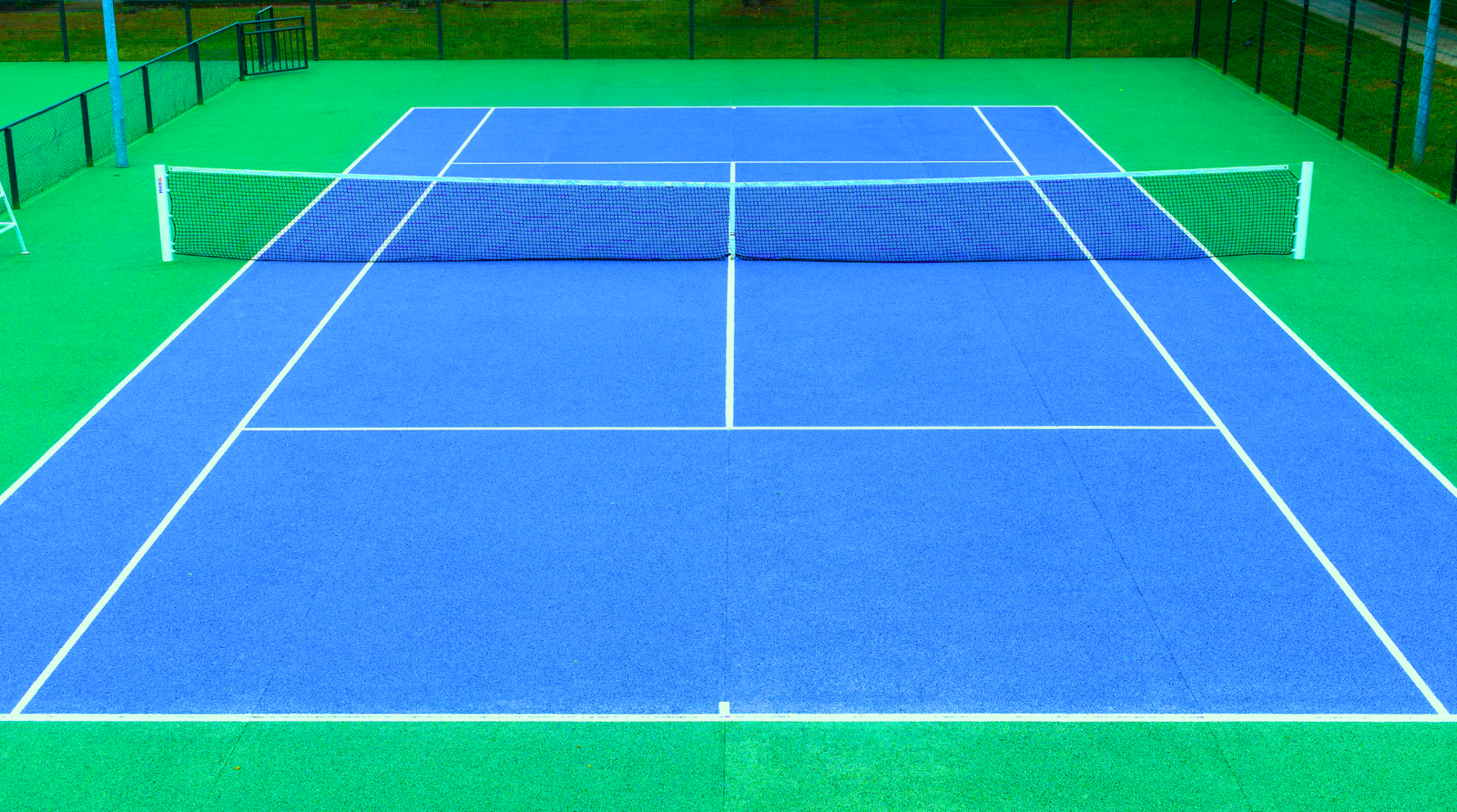When discussing Tennis, the terms “tennis court” and “lawn tennis court” are often encountered. Although they may seem synonymous, they refer to different concepts based on the type of surface used. This blog discusses in depth the differences between a typical tennis court and a lawn tennis court, highlighting the type of surface, playing characteristics, and maintenance requirements.
Also, Are you looking for outdoor gym equipment manufacturers in India?
Tennis Courts: A General Overview
A tennis court is a broad term that refers to any court suitable for tennis. Tennis court surfaces can vary greatly, with each providing different playing conditions and features. There are four primary types of tennis court surfaces:-
- Hard courts: These are the most common types of tennis courts, made from materials such as asphalt or concrete and coated with acrylic or other materials. Hard courts provide consistent bounce and are known for their durability. They require relatively little maintenance compared to other surfaces, but can be hard on players’ joints over time.
- Clay courts: Made from crushed brick, shale or stone, clay courts offer slower speeds and more bounce. The surface can be softer on players’ bodies, reducing the risk of injury. However, clay courts require regular grooming to maintain an even playing surface and effective drainage.
- Grass courts: Grass courts are the traditional surfaces for tennis, known for their fast speeds and low bounce. They are also considered more challenging due to their changing conditions, which can be affected by the weather. Grass courts are maintenance intensive, including regular mowing, watering and pest control.
- Artificial surfaces: These include synthetic materials designed to mimic natural surfaces, such as artificial grass or a rubberized surface. They are designed for durability and ease of maintenance, providing consistent play.
Lawn Tennis Court: Grass Surface
A lawn tennis court specifically refers to a tennis court that uses a natural grass surface. The term “lawn” emphasizes the traditional grass surface, which is a classic choice for tennis.
Characteristics of a lawn tennis court:
- Surface Material: The primary feature of a lawn tennis court is its natural grass surface. This type of court provides a distinctive playing experience, with faster play and less bounce than other surfaces.
- Style of Play: Grass courts generally have a faster pace of play and can be more unpredictable due to changing grass conditions. The ball often slides and bounces lower, which can be advantageous for serve-and-volley players. The surface can also be slippery when wet, adding to the challenge.
- Maintenance Requirements: Maintaining a grass tennis court is labor-intensive. Regular mowing, watering, and treatments to control pests and diseases are required. Grass courts also need to be repaired or reseeded periodically to keep the surface in optimal condition. Weather conditions, especially rain, can significantly affect playability and require prompt attention to prevent damage.
Main Differences Between Tennis Court and Lawn Tennis Court
Surface Type
- Tennis courts: Can be hard, clay, grass, or artificial, each of which has different playing characteristics and maintenance needs.
- Lawn tennis court: Refers specifically to courts with a natural grass surface.
Playing characteristics
- Tennis court: The playing experience varies depending on the type of surface, which affects ball bounce, speed, and player movements.
- Lawn tennis court: Provides faster play with a lower bounce, and conditions can vary with the weather.
Maintenance
- Tennis court: Maintenance needs depend on the type of surface. Hard courts need periodic resurfacing, clay courts need grooming, and artificial surfaces require minimal maintenance.
- Lawn tennis court: Involves intensive care, including mowing, watering, and managing weather-related issues
